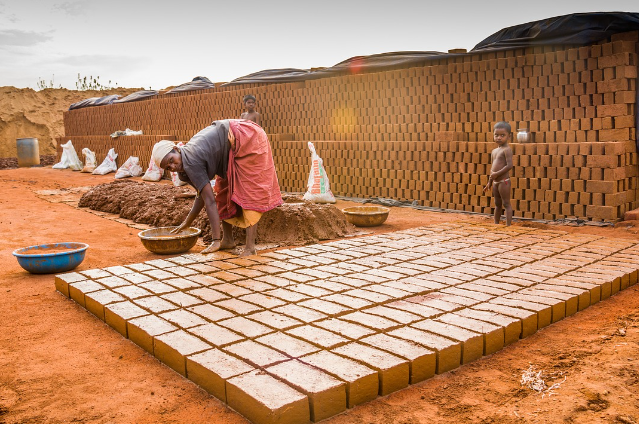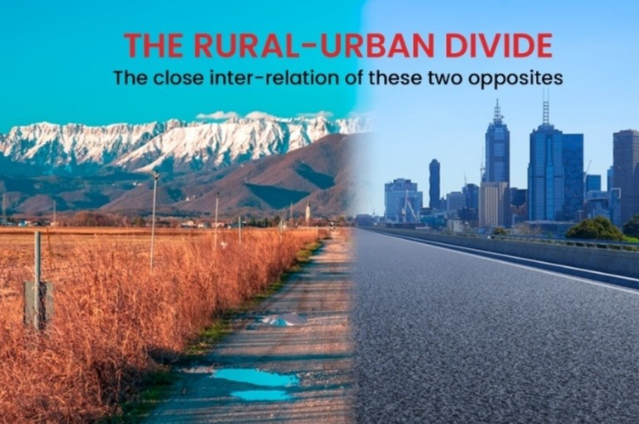
Image by Siva Nanthan from Pixabay
INTRODUCTION
Socioeconomic disparities in India have deep historical roots, with a legacy of caste-based discrimination, unequal access to resources, and disparities in education and employment opportunities. While the country has made remarkable progress in various sectors, these disparities persist and continue to affect millions of lives.
CAUSES OF SOCIOECONOMIC DISPARITIES:
- Caste system:
The caste system, though officially abolished, continues to influence social interactions and economic opportunities, perpetuating inequality. The caste system, a hierarchical social structure rooted in ancient Indian society, has been a significant contributor to socioeconomic disparities. This system categorizes individuals into distinct groups based on birth, determining their social status, occupation, and even interactions with others. The perpetuation of the caste system has resulted in deeply entrenched inequalities, as those born into higher castes often enjoy greater access to resources, education, and opportunities, while those in lower castes face systemic discrimination and limited upward mobility. This historical and deeply ingrained discrimination has hindered social cohesion and economic and economic progress, fostering a cycle of poverty and limited social mobility for marginalized groups.
- Educational Inequity:
Disparities in access to quality education contribute to unequal employment prospects and limited social mobility. Educational inequity is a significant contributor to socioeconomic disparities, perpetuating a cycle of disadvantage for marginalized communities. Several factors contribute to this issue. First, unequal access to quality education often stems from disparities in funding and resources between schools in affluent and low-income neighborhoods. This leads to variations in teacher quality, classroom facilities, and extracurricular opportunities, disproportionately affecting students from disadvantaged backgrounds. Additionally, cultural biases and systemic discrimination can result in lower expectations for certain groups of students, limiting their access to advanced courses and specialized programs.
- Rural-Urban Divide:
Urban areas experience better infrastructure, healthcare, and educational facilities compared to rural regions, leading to a stark divide in living standards. Socioeconomic disparities between rural and urban areas arise from a complex interplay of factors. Limited access to quality education, healthcare, and basic services in rural regions contributes to unequal opportunities. Disparities in infrastructure, employment options, and income levels further widen the gap, often hindering rural economic growth. Urban areas tend to attract better resources, investment, and technological advancements, leading to greater opportunities for education, jobs, and overall development. This rural-urban divide underscores the need for targeted policies addressing infrastructural, educational, and economic challenges to promote more equitable socio-economic development across both regions.

The rural-urban divide: The close inter-relation of these two opposites/ Image Credit: Sanjeev Kumar - LinkedIn
- Gender Inequality:
Gender-based discrimination and unequal opportunities for women further exacerbate socioeconomic disparities. Gender inequality is a multifaceted driver of socioeconomic disparities, stemming from deeply ingrained cultural norms, discriminatory practices, and unequal access to opportunities. Biased attitudes and expectations often limit women’s access to education and job prospects, perpetuating a cycle of financial dependency and lower earning potential. Unequal representation in leadership roles and decision-making positions further reinforces these disparities, while gaps in healthcare and reproductive rights can impede women’s overall well-being and economic advancement. Addressing gender inequality requires comprehensive efforts to challenge stereotypes, promote equal opportunities, and enact policies that empower women to fully participate in all aspects of society.
- Wealth Distribution:
The concentration of wealth among a small elite while a large segment of the population lives in poverty widens the income gap. Socioeconomic disparities in wealth distribution are influenced by a complex interplay of factors, ranging from historical legacies such as colonialism and slavery that have perpetuated inequalities, to structural mechanisms like tax policies and access to education, which can either widen or narrow the wealth gap. Global economic forces, technological advancements, and globalization have also contributed to the concentration of wealth in the hands of a few, while systemic discrimination based on race, gender, and other factors further exacerbates disparities. Additionally, variations in financial literacy, inheritance patterns, and investment opportunities play a role in shaping the unequal distribution of wealth within societies, creating a multifaceted landscape of socio-economic divide.

Wealth inequality, India 2000-2021/ Image Credit: World Inequality Database and businesstoday.in
POTENTIAL SOLUTIONS:
- Equal Access to Quality Education:
Initiatives targeting marginalized communities with improved educational facilities, scholarships, and vocational training can help bridge the education gap. One potential solution to ensure equal access to quality education is the implementation of comprehensive educational reforms that prioritize equitable resource allocation, teacher training, and curriculum development. This could involve targeted investments in schools located in marginalized communities, providing necessary infrastructure, technology, and learning materials. Furthermore, establishing scholarship programs, mentorship initiatives, and extracurricular activities can help bridge socioeconomic gaps and empower underprivileged students.
- Affirmation Action:
Strengthening and expanding affirmative action policies can counteract historical disadvantages, promoting representation and equal opportunities. Affirmative action, designed to address historical disadvantages faced by underrepresented groups, can be approached through several potential solutions. Firstly, implementing targeted outreach and recruitment strategies to attract diverse candidates to educational institutions and workplaces can help ensure a more inclusive environment. Secondly, providing mentorship and support programs can assist individuals from marginalized backgrounds. Lastly, investing in early education and community initiatives to address systemic barriers from the outset can contribute to long-term societal change.
- Rural Development:
Investment in rural infrastructure, healthcare, and agriculture can reduce the urban-rural divide, creating more balanced growth. One approach to rural development involves improving access to basic infrastructure and services, such as roads, electricity, healthcare, and education, which can help attract investment and create a conducive environment for economic growth.
- Women Empowerment:
Empowering women through education, employment opportunities, and legal protections can help combat gender-based disparities. Firstly, comprehensive educational initiatives should be implemented to ensure equal access to quality education and promote STEM fields for women and girls. Secondly, workplace policies must be reformed to eliminate gender-based pay gaps and provide flexible working arrangements. Finally, raising awareness through media campaigns and cultural shifts can challenge traditional norms and attitudes.
- Skill Development:
Skill enhancement programs and entrepreneurship support can empower individuals to create their own economic opportunities. It includes personalized online courses and tutorials that cater to individual learning styles and paces, mentorship programs connecting learners with experienced professionals, interactive workshops and hands-on projects that encourage practical application, gamified platforms that make learning engaging and enjoyable, collaboration with local businesses and industries to offer apprenticeships and internships, government initiatives to subsidize training costs and provide accessible education, and the integration of emerging technologies like virtual reality and artificial intelligence to create immersive and adaptive learning experiences.
- Community Engagement:
Grassroots initiatives that involve local communities in decision-making can lead to more inclusive development policies. Establishing regular town hall meetings and community forums can provide a platform for open dialogue between residents and local leaders. Utilizing social media platforms and dedicated community websites can facilitate information sharing and encourage online discussions. Collaborative projects such as neighborhood clean-up initiatives, cultural events, and workshops can foster a sense of unity and involvement. Implementing volunteer programs and mentorship opportunities can also empower residents to actively contribute to the betterment of their community, creating a stronger sense of ownership and shared responsibility.
SUMMING UP:
Socioeconomic disparities in modern India are a complex challenge that requires a multifaceted approach. By addressing historical inequalities, promoting education, empowering marginalized groups, and implementing progressive policies, the country can move towards a more equitable society. It is imperative for government, civil society, and individuals to collaborate in order to build a future where socioeconomic disparities are reduced, ensuring a better quality of life for all citizens.
